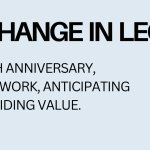 Even for those of us who eschew hype and hyperbole, 2017 was a big year for legal technology, characterised at many firms by a lack of clear firm-wide technology strategy and IT teams who are, ironically, being undermined from all quarters by the new wave of enthusiasm for shiny things.
Even for those of us who eschew hype and hyperbole, 2017 was a big year for legal technology, characterised at many firms by a lack of clear firm-wide technology strategy and IT teams who are, ironically, being undermined from all quarters by the new wave of enthusiasm for shiny things.
Starting with a positive, there was plenty to get excited about. In our State of the Industry – Financial Results 2017 report, it became clear just how many law firms are generating significant revenue from their own, niche client facing apps and tools. Leading the way is Allen & Overy, which long ago launched subscription-based derivatives product aosphere and has continued to build on that with new RegTech apps, followed by Clifford Chance, which we revealed has exceeded €1m in the first full year of its white labelled document automation service Clifford Chance Dr@ft. Pinsent Masons’ alternative legal services businesses now contribute “well into the seven figures” as it expands its flexible legal resource Vario into areas including data protection.
The startup market is booming, reminiscent of the peak of inflated expectations in the Gartner hype cycle for emerging technologies, with many competing startups likely to descend into the trough of disillusionment. Startups that in 2017 raised over $5m include ROSS Intelligence ($8.7m) and LawGeex ($7m) while in the US, serial entrepreneur Justin Kan raised $10.5m in the first round of funding for his new legal technology startup Atrium LTS. Contract management is the area where we’ve seen some of the most meaningful progress, with SaaS vendors such as Avvoka allowing users to create contract templates in the cloud via an in-browser editor and apply clever analytics to create performance heatmaps. As we revealed in October, ContractPod has launched an IBM Watson-backed contract analyst that is fully integrated with its contract management platform.
More firms than ever signed up with due diligence tools such as Kira Systems and Luminance, with the latter in November closing a $10m Series A funding round that values the company at $50 million. Kira in November signed Latham & Watkins and Davis Polk & Wardwell in a significant milestone for the Canadian-headquartered company. And blockchain became more than just a buzz word, with K&L Gates for one, starting the ball rolling on plans to establish an internal, private and permissioned blockchain to assist in the exploration, creation, and implementation of smart contracts and other technology applications for future client use.
For heads of IT in their various guises, the advances of the past year to eighteen months have presented previously unfathomable challenges. At one time, being a law firm IT manager meant banging a drum that no-one listened to because they didn’t care. Now it’s often the case that they aren’t listening because they are all too busy banging their own drum, and the noise can be quite deafening.
Firms are going to have to find their own strategies not only to get to grips with but to embrace this new phenomenon. Shadow IT doesn’t sit well within the old command and control style of IT management but as we discussed in December with Nick West, who has taken over as chief technology officer at Mishcon, the solution going forward is likely to be to create a user experience that is at least comparable to what you would experience outside of the firm – legal tech vendors take note: you are going to have to up your game. At ILTA Insight 2017, legal technology vendors were repeatedly criticised for not knowing their clients well enough or how their technology fits in with law firms’ long-term ambitions.
That was echoed at Legal Week Connect, where I chaired a panel that included Lloyds Banking Group head of legal operations, Sophie Schwass, who commented on stage that many vendors know absolutely nothing about her business when they approach her. With Microsoft and Google snapping at your heels, the only question is why not?
In our State of the Industry report we found that Herbert Smith Freehills alternative legal services arm ALT grew by around 7% in the past year and generated over £30m in revenue. It is the in the process of developing two homegrown tools CEO Mark Rigotti told us: “We are tilting towards business-driven solutions that are developed internally at the coal face.”
The change that affects the legal industry will have many faces. The days of legal IT directors taking decisions in a vacuum are gone and that really can be a good thing if you can tap into the needs of the business. I suspect the days of vendors being ill-educated about their clients will last a bit longer. But beware. The new guard of IT leader will be cherry picking from a much bigger and more competitive technology bowl than ever before.
Caroline Hill (pictured) is editor in chief of Legal IT Insider
This article first appeared in the November/December Legal IT Insider newsletter – for your free copy click here: https://legaltechnology.com//latest-newsletter/






